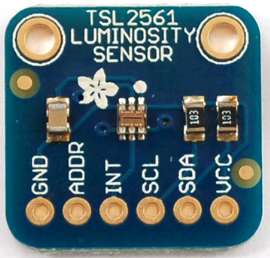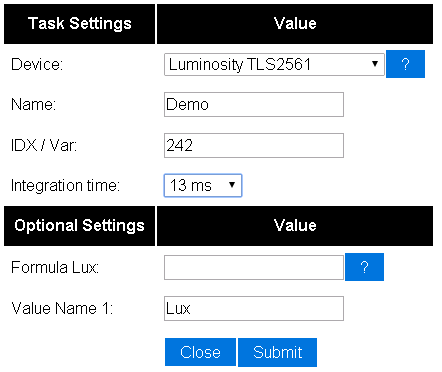Difference between revisions of "TSL2561"
Jump to navigation
Jump to search
Grovkillen (talk | contribs) m (→Hardware) |
Grovkillen (talk | contribs) m (→Hardware) |
||
| Line 12: | Line 12: | ||
ADDR-to-GND = 0x29<br/> | ADDR-to-GND = 0x29<br/> | ||
ADDR-to-(no connection) = 0x39<br/> | ADDR-to-(no connection) = 0x39<br/> | ||
| − | ADDR-to- | + | ADDR-to-VCC = 0x49<br/> |
[http://cdn.sparkfun.com/datasheets/Sensors/LightImaging/TSL2561.pdf[Datasheet]] | [http://cdn.sparkfun.com/datasheets/Sensors/LightImaging/TSL2561.pdf[Datasheet]] | ||
Revision as of 20:29, 17 May 2017
Contents
Introduction
The ESP module can read a TSL2516 Lux sensor using the I2C protocol.
The TSL2561 sensor needs to be connected to a the I2C pins on the ESP module. These pins can be configured on the hardware tab.
Hardware
The TLS2561 sensor can be connected directly to an ESP module by using the two pins SDA and SCL.
I2C address set as:
ADDR-to-GND = 0x29
ADDR-to-(no connection) = 0x39
ADDR-to-VCC = 0x49
Software
Custom Sketch
ESP Easy
Use the device tab on the ESP Easy webinterface and create a new task by editing one of the available tasks. Select "Luminosity TSL2561" from the dropdown box.
Enter the IDX found in the Domoticz device page. That should be all.

